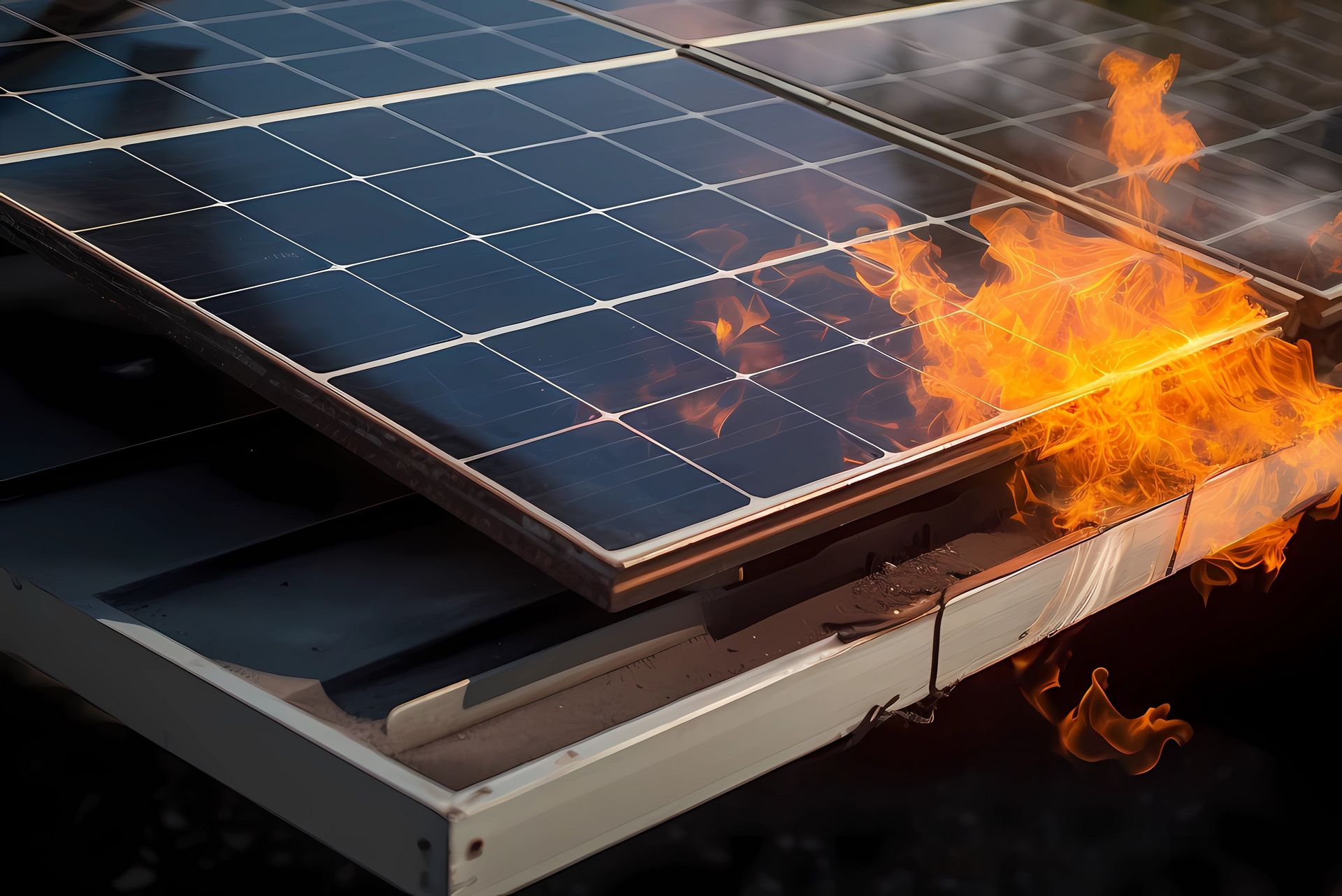Fire Risks in PV Systems: A Deeper Analysis
The use of photovoltaic (PV) systems to generate electricity has increased significantly in recent years. However, this has also been followed by increasing fire risks in PV systems. This blog post is dedicated to a closer examination of the various technical causes of fires in PV systems, as well as a solution that minimizes these risks and enables integration into existing fire detection systems.
The technical causes of fires in PV systems.
Faulty connections and damage: Often, faulty connections, damaged cables or defective components in PV systems lead to fires. These problems can be due to improper installation or natural wear and tear of components.
Overheating due to faulty contacts: Poorly manufactured or prematurely aged contacts are potential sources of danger. They can lead to short circuits that cause overheating and ultimately ignition or electrical arcing in PV systems with DC voltages up to 1000 VDC.
Loose clamp connections: Unsecured or loose clamp connections also pose a significant risk. They can cause power interruptions and increase the risk of fire.
Improperly sized components: Undersized components that do not meet system requirements can cause overloads, increasing the risk of fire.
Electrical faults: faults in the electrical system, such as short circuits or bends, are potential causes of fire, especially if not detected in time.
Wear of insulating and conductive materials: Aging or wear of materials in PV modules or the mounting structure can lead to electrical faults and thus to fire risks, especially due to environmental influences such as dust, animal structures, hail damage and dirt.
Electrical sensor cables for early fire detection
The electronic sensor cable system from LISTEC offers the optimal solution for early fire detection or as a measuring device for temperature monitoring in PV systems. It is maintenance-free and can be used even under harsh environmental conditions. Multiple branches and individual sensors on the object to be monitored make it unique in the industry. The flexibility of the cable allows installation along the entire system. To make sure that you are always on the safe side, it is possible to seamlessly integrate the LISTEC cable into existing Schrack Seconet fire alarm systems. Let's take a look at this integration in detail.
- Basic connection via the XLM35 loop module: This module enables a standard-compliant connection to Schrack Seconet fire alarm control panels and ensures the highest safety standards.
- Direct connection via the detector loop: The sensor cable can be connected directly via the detector loop. This eliminates the need for additional cabling, allowing seamless integration into existing systems.
- XLM35 fits into the SCU835 housing: The XLM35 loop module fits perfectly into the SCU835 housing, ensuring smooth cooperation.
- Up to 8 detector zones: The system can monitor up to 8 detector zones, providing comprehensive coverage for PV systems.
- Advanced functions with TCP/IP MODBUS connection: An additional TCP/IP MODBUS connection allows live data to be monitored, the system to be configured, and detailed information about LISTEC units and sensors to be accessed.
Fire risks in PV systems require a thorough investigation of the technical causes and effective solutions for early fire detection. LISTEC's electronic sensor cable system offers a robust solution that protects PV systems from potential fires and integrates seamlessly with existing fire detection systems. Learn more about the d-LIST sensor cable system and increase the safety of your PV installations. Contact us today to find out how you can protect your assets.
Header Image: AdobeStock/MAXSHOT_PL
